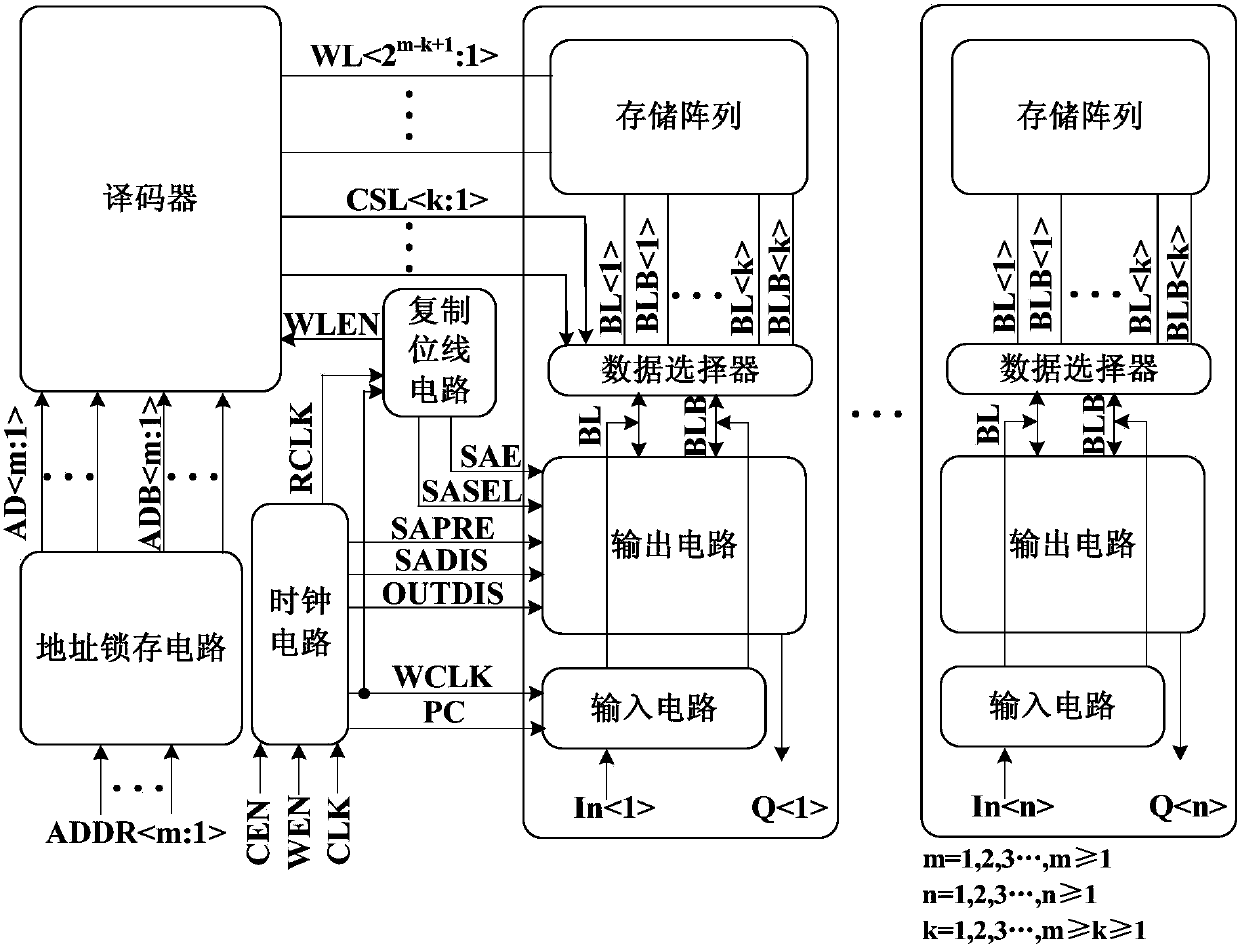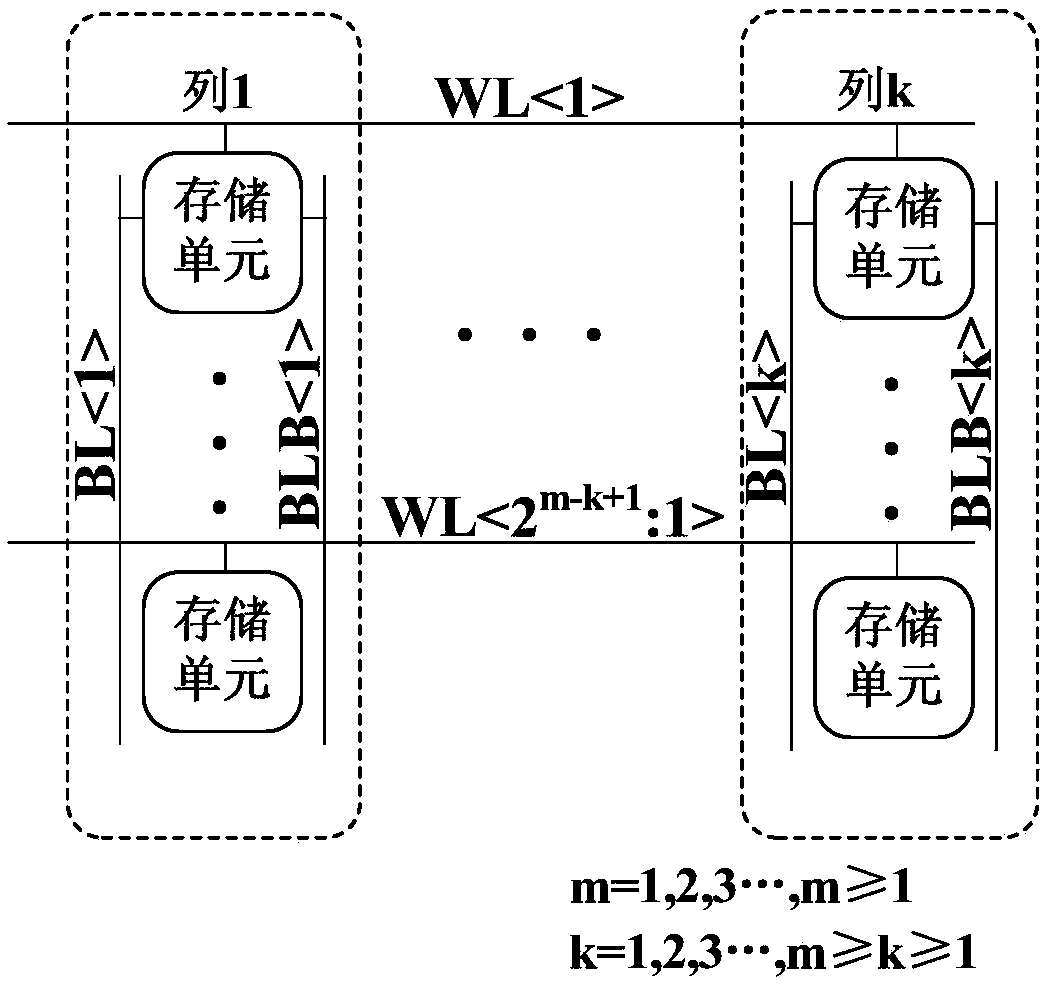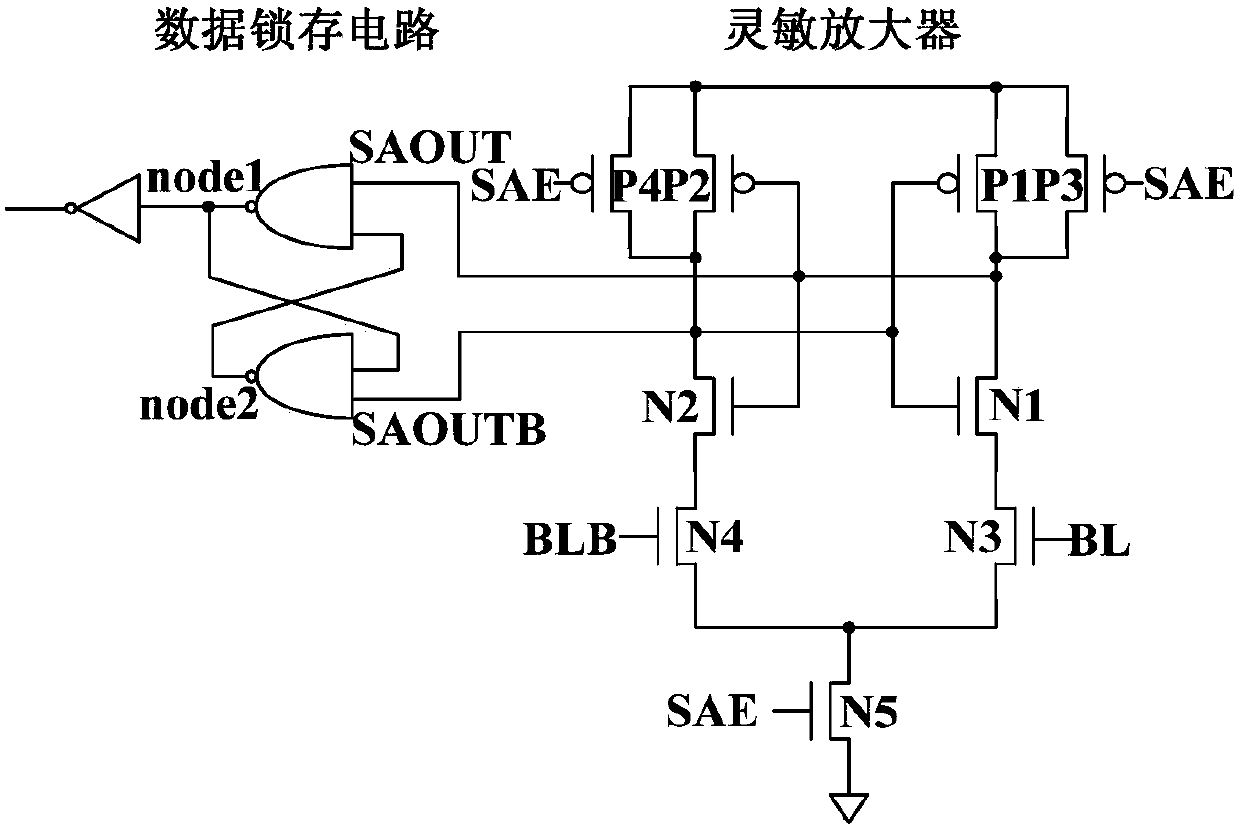A kind of output circuit of SRAM
A static random, output circuit technology, applied in the field of output circuits, can solve the problems of reading data power consumption difference, static random access memory differential power consumption analysis attack threat, not suitable for design defense power consumption attack static random access memory and other problems, to eliminate Effects of Inconsistent Wiring Capacitance
- Summary
- Abstract
- Description
- Claims
- Application Information
AI Technical Summary
Problems solved by technology
Method used
Image
Examples
Embodiment
[0024] Example: such as Figure 6 As shown, an output circuit of an SRAM includes a sense amplifier and a data latch circuit, and the sense amplifier includes a first PMOS transistor P1, a second PMOS transistor P2, a third PMOS transistor P3, a fourth PMOS transistor P4, and a fifth PMOS transistor P4. PMOS transistor P5, sixth PMOS transistor P6, seventh PMOS transistor P7, first NMOS transistor N1, second NMOS transistor N2, third NMOS transistor N3, fourth NMOS transistor N4 and fifth NMOS transistor N5; the first PMOS transistor The source of P1, the source of the fourth PMOS transistor P4 and the source of the fifth PMOS transistor P5 are connected to the power supply, the drain of the first PMOS transistor P1, the source of the second PMOS transistor P2 and the third PMOS transistor P3 The source of the second PMOS transistor P2, the gate of the third PMOS transistor P3, the drain of the fourth PMOS transistor P4, the drain of the sixth PMOS transistor P6, the drain of ...
PUM
 Login to View More
Login to View More Abstract
Description
Claims
Application Information
 Login to View More
Login to View More - R&D
- Intellectual Property
- Life Sciences
- Materials
- Tech Scout
- Unparalleled Data Quality
- Higher Quality Content
- 60% Fewer Hallucinations
Browse by: Latest US Patents, China's latest patents, Technical Efficacy Thesaurus, Application Domain, Technology Topic, Popular Technical Reports.
© 2025 PatSnap. All rights reserved.Legal|Privacy policy|Modern Slavery Act Transparency Statement|Sitemap|About US| Contact US: help@patsnap.com



